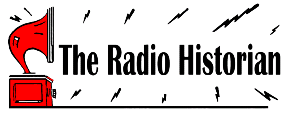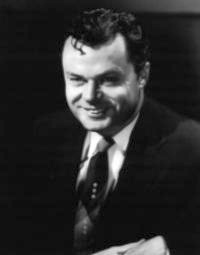The History of KGTT / KGGC / KSAN / KSOL / KEST
San Francisco, California, lES
By John Schneider, W9FGH
www.theradiohistorian.org
Copyright 2015 -
John F. Schneider & Associates, LLC
[Return
to Home Page]
(Click
on photos to enlarge)
Tommy Tong on the
KSAN Chinese Hour, 1949
The church's second attempt at building a radio station was more successful, however. A license was issued again in 1925 for the call letters KFVZ. These call letters were chosen by the Federal Radio Commission in their pattern of issuing call letters in alphabetical order. Indications are that the call letters were never used, and that the church requested and was granted a modification of the call letters to KGTT, standing for "Glad Tidings Temple". The station went on the air November 30, 1925, with a power of 50 watts, and was operated by the pastor, Robert J. Craig, who also served as the station's manager and announcer. The station initially broadcast on 1420 kc., where it shared the frequency with KFQU in Holy City, California.
Sometime before 1930, the station was transferred to the Golden Gate Church, and the call letters were changed to KGGC. (It may be that this simply represented a change of name of the church, however.)
KGTT/KGGC had been a minor station in the Bay Area through the twenties and thirties. That changed in 1939 when Sherwood Patterson purchased the station and changed the call letters to KSAN. New studios were constructed in the Merchandise Mart near Market Street. A radio tower was erected on the roof of the building, and a 250 watt transmitter was installed. The reborn station attracted considerable attention with its programming of popular music and disk jockeys. Two popular KSAN personalities in 1941 were Les Malloy and Vic Paulsen. Evening host Malloy called himself the "Midnight Son", while Paulsen, who held down the morning shift, was known as the "Rising Son". After the Pearl Harbor attack later that year, however, Paulson's nickname was quickly dropped. Dave Crosatto had the first sponsored all-night program in the Bay Area on KSAN, supported by the Mark Hopkins Hotel and the Yellow Cab Company. Perhaps the most notable aspect of KSAN's programming, however, was its devotion to horse race results. At any time of the day, programs were interrupted to announce the latest results from Golden Gate Fields. The station found instant success with this policy, as Vic Paulsen told it. He explained that even people who didn't like the station would listen, just to keep up on their bets. This policy did not win any fans at the F.C.C., however, and the station reportedly lost its bid for a 1,000 watt frequency to a Santa Cruz station because it gave more attention to race results than to public service features.
KSAN remained as a popular music station in the Bay Area throughout the forties and early fifties. In the mid fifties, the music format was changed to feature rhythm and blues music, aimed at a primarily black audience. This continued to be the station's reason for existance for a number of years.On July 3, 1964, KSAN was sold to John F. (Les) Malloy and Delmor A. (Del) Courtney, two well-known San Francisco radio and television personalities. They changed the call letters to KSOL, which reflected the evolution of rhythm and blues into "Soul" music. The station competed for the black audience with KDIA in Oakland (formerly KLS and KWBR) until 1971. That year, the station was sold again, and the call letters were changed to KEST. Programming was changed to feature mainstream adult-oriented music, despite many complaints from the station's loyal black listeners. KEST was acquired by Douglas Broadcasting, Inc., in December of 1988.
REFERENCES:
Radio Service Bulletins, 1922 and 1925.
Interview between author and Vic Paulsen, former KSAN announcer,
San Francisco, California, December 9, 1970.
Interview between author and Dave Crosatto, former KSAN announcer,
San Francisco, California, April 27, 1970.
The Federal Radio Commission Station List, as authorized on 11/11/28.
With research by Barry Mishkind, 1993-94.
www.theradiohistorian.org
John F. Schneider & Associates, LLC
Copyright, 1997





